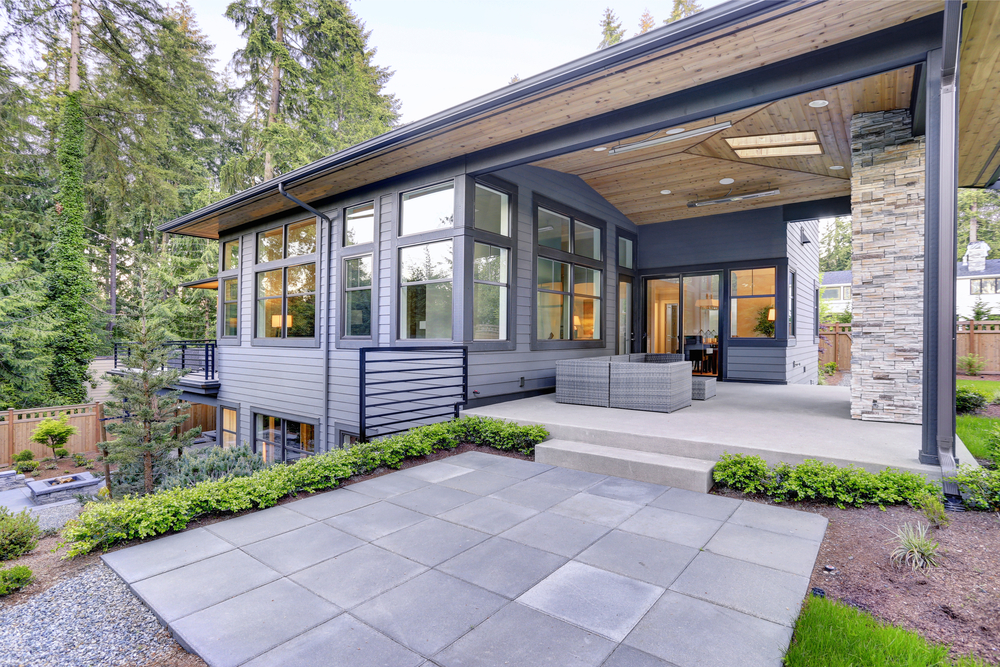Attaining Sustainability and Longevity With Eco-Friendly Concrete Building And Construction Solutions for Your Job
The integration of green products and sustainable construction approaches holds the assurance of promoting longevity in tasks while alleviating unfavorable ecological influences. By checking out cutting-edge green concrete building and construction remedies, a harmonious equilibrium in between toughness, sustainability, and environmental responsibility can be attained.
Advantages of Eco-Friendly Concrete
The advantages of making use of green concrete in building and construction projects extend past ecological advantages to encompass cost-effectiveness and durability. Additionally, this type of concrete can add to getting eco-friendly building qualifications, which can enhance the marketability and worth of a building and construction job.

Lasting Construction Practices
Having developed the benefits of green concrete in building and construction tasks, the focus currently changes in the direction of lasting building methods that better boost ecological stewardship and long-lasting viability in the building industry. Lasting building methods involve the assimilation of eco-friendly techniques throughout the whole building procedure, from style to demolition. This consists of making use of recycled products, optimizing power performance, lowering waste generation, and advertising the wellness of both the atmosphere and owners.
One key aspect of sustainable construction is the unification of sustainable energy resources like photovoltaic panels and geothermal heater to decrease reliance on standard energy grids. Furthermore, carrying out green structure accreditations such as LEED (Management in Energy and Environmental Style) or BREEAM (Building Research Study Facility Environmental Assessment Technique) can aid guarantee that tasks meet stringent sustainability criteria.
Additionally, lasting building techniques focus on water preservation via using reliable pipes fixtures and rainwater harvesting systems. By embracing these eco-conscious strategies, building jobs can significantly decrease their environmental impact while promoting a much more lasting and resilient built atmosphere for future generations.

Long Life With Eco-friendly Products
Making use of resilient environment-friendly materials in building tasks is vital for ensuring the longevity and sustainability of buildings. Eco-friendly products are those that have a decreased influence on the setting throughout their life cycle, from removal to usage, disposal, and production. One key aspect of green materials is their longevity, which straight adds to the long life of a framework. By selecting top notch, durable environment-friendly products, building projects can reduce the need for regular repairs and replacements, thus expanding the life expectancy of the structure.
Materials such as recycled steel, recovered timber, bamboo, and recycled glass are examples of eco-friendly products that offer both longevity and sustainability benefits. These products not only add to the durability of a structure but likewise help in reducing its carbon impact. In addition, green materials commonly call for much less upkeep and maintenance, further improving the durability of the structure.
Integrating environment-friendly products right into construction tasks is an important site aggressive approach in the direction of achieving sustainability and long-term viability in the built environment - concrete contractors near me. By focusing on longevity and ecological duty, home builders and designers can create structures that stand the examination of time while lessening their ecological impact
Ecological Effect Reduction
Purposefully carrying out eco-conscious methods can considerably mitigate the ecological effect of concrete construction jobs. By prioritizing lasting sourcing of resources, such as making use of recycled aggregates and extra cementitious materials like fly ash or slag, the carbon impact of concrete manufacturing can be minimized. Additionally, optimizing the mix style to reduced cement material browse around this site while keeping performance requirements aids reduce greenhouse gas emissions related to concrete production.
During building, decreasing waste generation with reliable task planning and utilizing sophisticated strategies like prefabrication can further reduce the environmental impact. Incorporating methods for water conservation, such as on-site water reusing systems and absorptive pavements, helps decrease water usage and overflow air pollution (concrete contractors near me). Furthermore, carrying out energy-efficient methods in concrete treating and building devices operation can add to lowering total energy usage and associated emissions
Eco-Friendly Solutions for Projects
Implementing environmentally friendly services in construction projects is extremely important for lowering ecological impact and promoting sustainability. From the style phase to the products made use of, there are different ways to integrate environmentally friendly techniques into construction tasks. One efficient approach is to focus on making use of lasting materials, such as recycled concrete aggregates or recovered wood, which can help in reducing the carbon impact of the project. Furthermore, utilizing energy-efficient modern technologies like solar panels or geothermal furnace can further boost the eco-friendliness of the construction procedure.
An additional important facet of eco-friendly building services is waste administration. Carrying out recycling programs on-site and guaranteeing appropriate disposal of building and construction waste can significantly reduce the environmental impact of a job. Moreover, making structures with efficient water management systems, such as rain harvesting or greywater recycling, can add to preserving this beneficial resource.
Conclusion
Finally, embracing eco-friendly concrete building image source services offers countless benefits for tasks, including sustainability, long life, and decreased ecological impact. By including eco-friendly products and sustainable methods, building jobs can add to an extra eco-friendly and lasting future. It is vital for firms and people in the building industry to prioritize environment-friendly services to aid reduce the unfavorable effects of standard building techniques on the setting.
The benefits of using environmentally friendly concrete in building jobs expand past ecological benefits to include cost-effectiveness and durability. By choosing eco-friendly concrete, building jobs can accomplish sustainability goals without jeopardizing on quality or performance.
Having actually developed the benefits of environmentally friendly concrete in building projects, the emphasis currently shifts towards lasting building practices that further boost ecological stewardship and long-lasting practicality in the building sector.In final thought, adopting eco-friendly concrete building and construction remedies provides numerous advantages for projects, including sustainability, longevity, and minimized environmental influence (concrete contractors near me). It is necessary for companies and people in the construction market to focus on environment-friendly solutions to assist mitigate the adverse impacts of standard building approaches on the environment